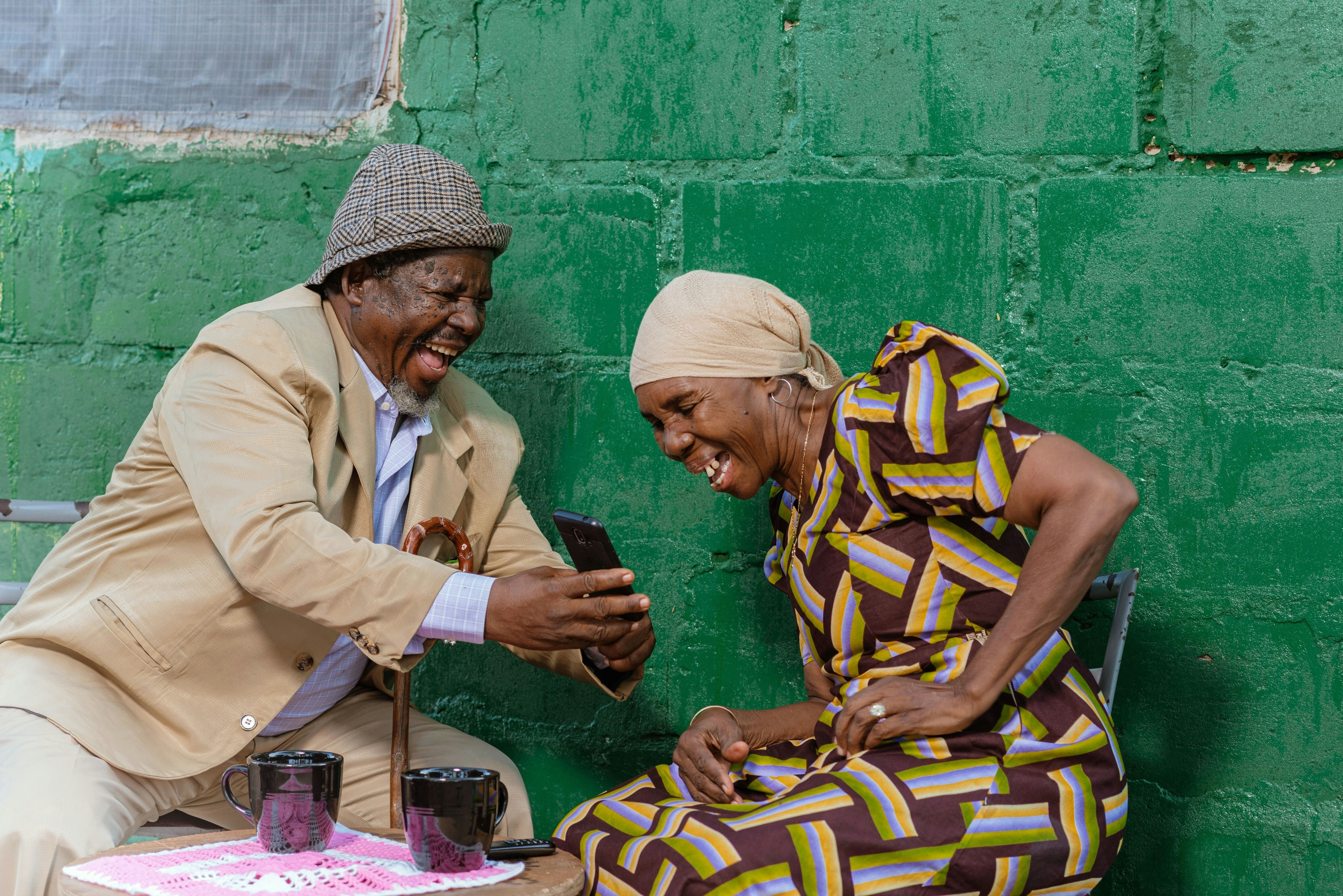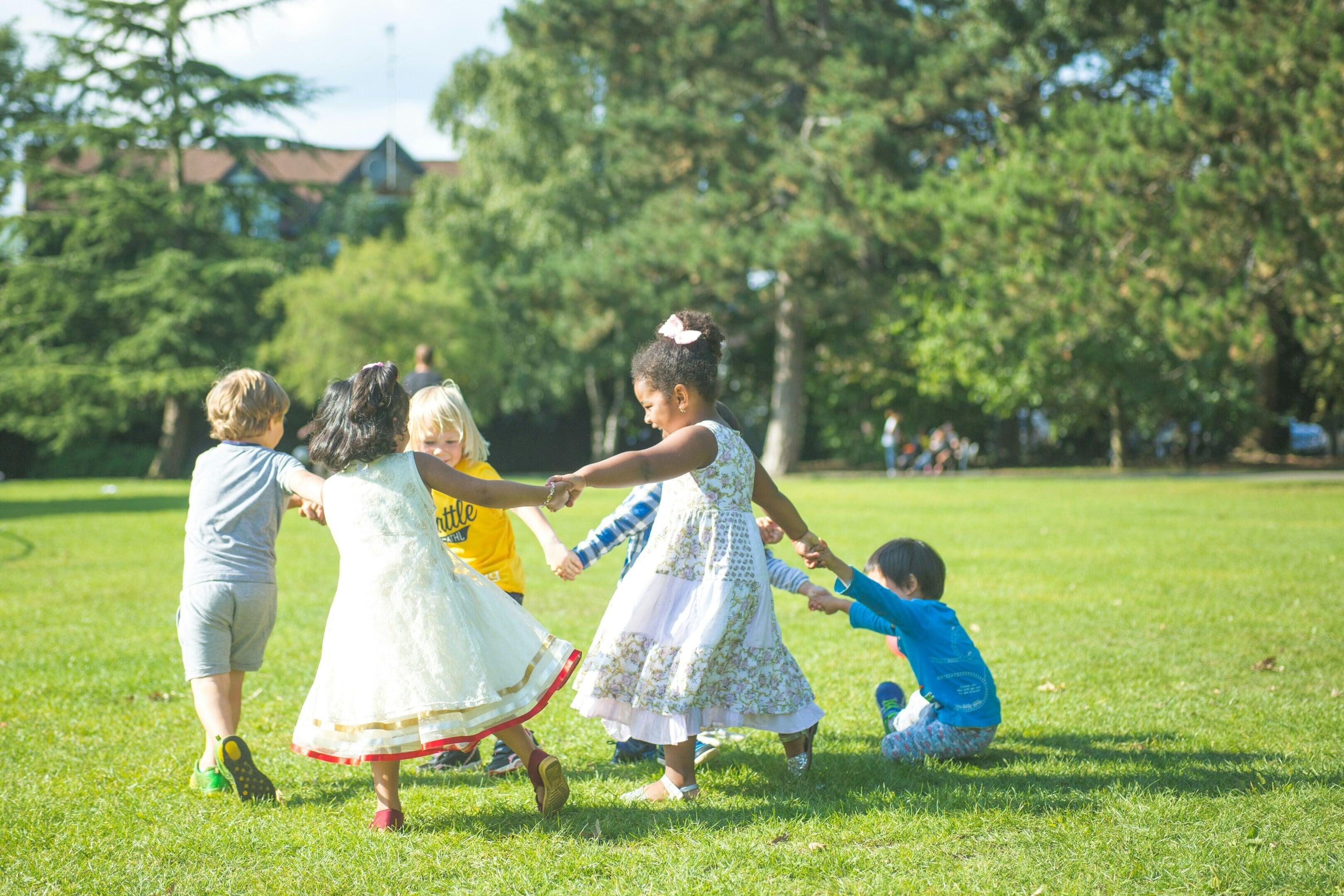10 four-year-olds walk into a retirement home. Here's what happened next

'Old People’s Home for 4 Year Olds' explored the increasing isolation of older people within our communities.
Image: REUTERS/Lucy Nicholson
Stay up to date:
Mental Health
Lying on the floor pretending to roar like a lion can do wonders for an elderly man’s well-being. That’s not a scientific fact, but it was one of the surprising and memorable moments we observed while making a television program which introduced a group of very young people with residents of a retirement village.
The two episodes of Old People’s Home for 4 Year Olds set out to explore the increasing isolation of older people within our communities.
The impact of young children and older people sharing daytime care facilities has already been shown to be generally positive. But this was the first time an experiment was undertaken within the UK to measure the impact of inter-generational interaction on the health and happiness of the older group.
Ten four-year-old children and 11 people in their late 80s were brought together for six weeks in a new nursery set within a retirement community in the city of Bristol. Before we started, the elderly participants were measured on their cognition, mood and depression, as well as physical abilities including balance and the ability to get up and walk (“Timed Up and Go”). These measurements were taken again at three weeks and once more at the end of the six-week programme.
The programme consisted of a timetable of activities in which the two generations were given time and space to engage physically and socially. It included games, occasionally requiring individuals to get down on and off the floor, walking outdoors, picnicking and participating in indoor activities using a variety of craft and art work. The final week also included an inter-generational sports day and a short theatrical production.
After three weeks, the halfway point, there were noticeable improvements in the residents’ measurement scores. Final measurements revealed significant improvements in the majority of metrics, with 80% percent of residents showed improvement in the “Timed Up and Go”. Grip strengths were up generally and activity tracker scores showed that the residents had become increasingly active over a 24-hour period. On sports day, one woman who could not recall the last time she ran, was seen sprinting off with her companion four-year-old in order to beat the competition.
At the start of the experiment, nearly all of the residents were identified as depressed, two of them severely. After six weeks, none of them was registered as depressed. They had completely changed their outlook on life and in their hope for the future. Even the most sceptical person within the group, who had been heard to say “I can’t really see it making any great difference to us”, admitted that the children had brought “great joy”.
Lifting spirits
This was not a scientific trial or a traditional academic research project. It was a social experiment involving a very small group of people. But the results showed marked changes in the residents’ physical ability and mood.
When you get very old you become less mobile, friends die, and you can’t get out to meet people. If you live in a care home, the only younger people you see every day are staff. That’s why depression is the epidemic of old age – and it’s important for us to present opportunities for them to meet young people.
Children are open minded. They love attention and take an interest in adults. At the same time, children learn quite mature skills from adults, so this inter-generational engagement is reciprocal.
You can’t cure arthritis completely, but you can increase confidence and, with the help and encouragement of the children, we saw our older folks doing things they never imagined they’d do again – jumping, dancing and rolling around on the floor.
As a consequence of our television experiment, significant developments are underway within the trust which took part in the program. Contact with the children and their families has been encouraged and continued. They are investigating additional ways to increase socialisation of the residents with surrounding communities. And plans are even in place to build a permanent nursery in one of the trust’s homes.
Many older adults live depressed lives in isolation with sadness, hopelessness, and negative feelings toward the self. This experiment has shown that, within a short timeframe – and where people share a similar vision of intergenerational mixing – it is possible to bring about significant enhancement in the well-being of older people.
Accept our marketing cookies to access this content.
These cookies are currently disabled in your browser.
Don't miss any update on this topic
Create a free account and access your personalized content collection with our latest publications and analyses.
License and Republishing
World Economic Forum articles may be republished in accordance with the Creative Commons Attribution-NonCommercial-NoDerivatives 4.0 International Public License, and in accordance with our Terms of Use.
The views expressed in this article are those of the author alone and not the World Economic Forum.
Related topics:
Forum Stories newsletter
Bringing you weekly curated insights and analysis on the global issues that matter.
More on Wellbeing and Mental HealthSee all
Hannes Klöpper
August 26, 2025
David Ebube Nwachukwu and Adam Skali
August 25, 2025
Margarita Louis-Dreyfus
August 22, 2025
Maha Hosain Aziz
August 20, 2025
Chavalit Frederick Tsao
August 19, 2025
Shyam Bishen
July 17, 2025





